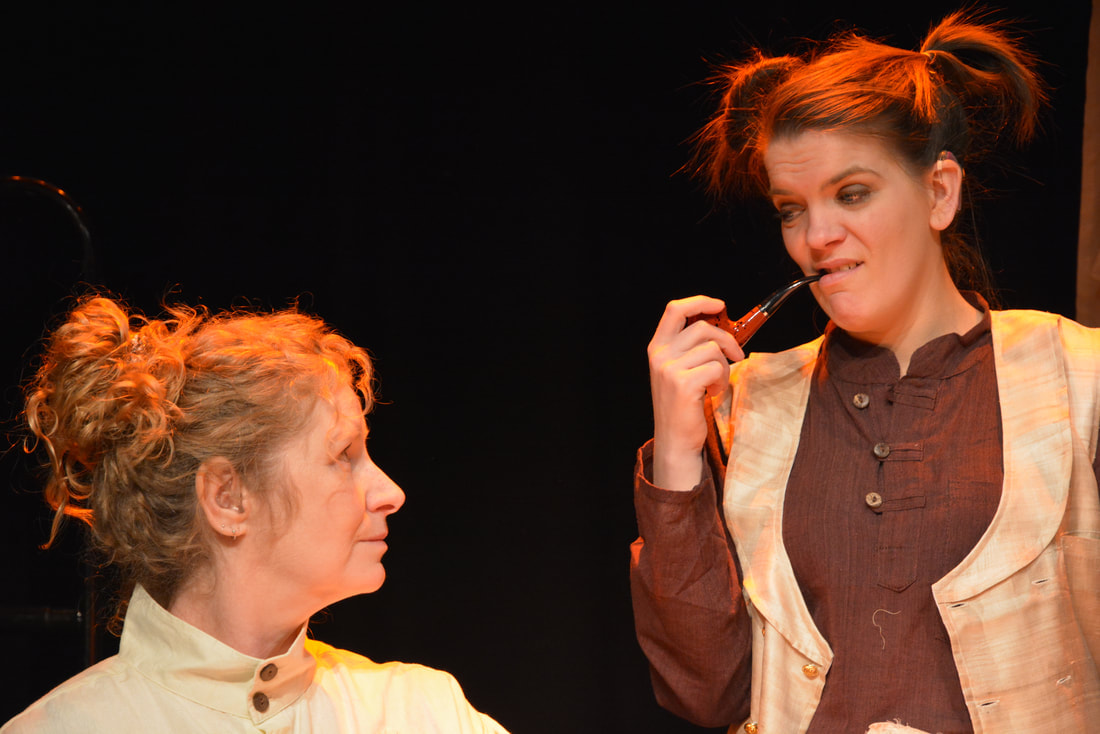
The Lighthouse, by Little Cog performed bi-lingually in British Sign Language and spoken English
Wave of change in disabled-led theatre
This week a trio of plays opens at Live Theatre Newcastle in which, for the first time, every show is captioned. For Vici Wreford-Sinnott, playwright and disability activist, it shows how times are changing.
Change is in the air for disability theatre. And that’s exciting. It’s always wonderful to be part of a wave of change. I celebrate the increased numbers of disabled artists making their way onto our stages – I am thrilled to be one of them – but it’s vital we ensure wider change, which is not tokenistic or ad hoc, is sustained across the arts.
And we must take care to provide relevant support for disabled artists making their first works. Of course, they must write what they are driven to, in their own voices, but it can be helpful to know there is an artistic and theoretical lineage to your work.
Change has been in the air for disability theatre for over forty years in the UK and some of us have ridden several largely unknown but incredible waves. Did you know, for example, that in the early 1990s a group of disabled performers literally stopped traffic around the Monument in Newcastle protesting with the Disabled Peoples’ Direct Action Network?
Our theatre was rooted in activism – as our citizen status was less – and, back then, we were largely viewed as amateurs, culturally underestimated and often characterised as troublemakers as we challenged the dreadful artistic tropes and stereotypes that perpetuated our low status over centuries of theatre.
Rich history of disability theatre practice
Perhaps it’s useful to explain what ‘disabled-led’ means. It means disabled people are in the lead artistic creation and decision-making roles of work which explores a social model of disability experience in some way. Both the process of making the work and sharing it with audiences is fully accessible.
We want to collaborate on pivotal new productions, with equitable resources and platforms. And while not all of us want to make work about disability all the time, marking out disabled-led space where we centre disabled peoples’ intersectional experiences and voices, moves us towards a wider cultural acknowledgement and understanding of historical exclusion and current/future equity.
The North East has a rich history of disability theatre practice dating back to the 1980s and the Lawnmowers Theatre Company. Since then, much more disabled-led work has emerged. In addition, many individual artists have developed sketches, comedy and cabaret work, as they were the DIY platforms available to disabled people at the time, often in community and leisure centres.
I set up Little Cog, a national touring disabled-led theatre company based in the Tees Valley, to challenge the lack of authentic disabled stories told by disabled people on our stages and to create exciting new disabled protagonists. It continues to create platforms for disabled artists while advocating for real change. You can find out more history in a new living archive of disability arts in the North East, On Whose Shoulders We Build.
Disability hugely misunderstood
Disability is a hugely misunderstood social, historical and cultural phenomenon, and until venues understand this, and appreciate the artistic and aesthetic advances disabled practitioners are making, along with introduction of accessible processes and working cultures, we won’t see profound change on our stages. It requires ideological reflection, and action, to unravel embedded biases and prejudices about the cultural capacity and value of disabled artists.
In the North East, active allies have been vital to the change we have seen, with ARC Stockton under Annabel Turpin’s leadership evolving as a beacon of excellence nationally in its work with disabled artists. Several leading arts companies have disabled people in their leadership and are committed to Sign Language, Deaf culture and dance. All ensure their process and practice are accessible and embed access for audiences into their productions.
It has been refreshing to see the openness and change being investigated in disability practice at Live Theatre, Newcastle under the artistic direction of Jack McNamara (and during the Regional Theatre Young Director Scheme placement of director Bekih Bowsher). Without fanfare, the increase in programmed and commissioned work to full production by disabled artists is clear for all to see.
It can be hard to get this right and it is a learning process for all. But the successes have rolled in and wider audiences have seen new stories and disabled audiences have seen themselves reflected on stage in ways that matter.
Public affirmation
So why does including access measures and captioning every performance of Three Acts of Love at Live Theatre matter? At a practical level it means people with hearing conditions and some neurological conditions who use spoken English, get to experience the show in an accessible way every day.
It demonstrates Live Theatre testing and pushing its own current capacity for access for audiences, and it signifies that Live is listening to its audiences and artists. Disabled audiences and artists begin to feel that they are an important part of the organisation’s future, and it gives a confidence to the Live Theatre team to say: “We can do these new things and when we do it well, we want to do more of it.”
Disabled people are involved in the writing, directing and acting of Three Acts of Love telling human stories in ways that benefit much wider audiences. It is a public affirmation that disabled people matter.
Vici Wreford-Sinnott is a playwright, including of Three Acts of Love, and a disability campaigner.
![]() live.org.uk/
live.org.uk/
![]() @NECulture | @LiveTheatre
@NECulture | @LiveTheatre
*This article has been updated to make clear that captioning every show for the first time refers to Live Theatre Newcastle only.

Join the Discussion
You must be logged in to post a comment.